4 File Management
4.1 Theory
The developers of modern computers have gradually added barriers to creating reasonable file structures on a computer. Yet file management is critical for
- organizing ideas,
- storing and organizing many documents associated with a single project,
- creating a unique internal address that can be used to pinpoint the location of a file or folder,
- effective coding, and
- complex research projects.
File management is almost entirely inaccessible on most tablets and smartphones. It is still entirely possible on a computer but requires a few additional clicks and environment adjustments. As such, this section requires you to use a Mac or PC computer, not a tablet.
Tags provide useful additional organizational structure but can never replicate the unique internal address created by a file structure.
Path bars
The path bar is critical for file management. It lets you see where you files are located at all times, allows you to copy the address in text form, and lets you navigate up your folder tree by clicking on higher level folders in the path bar.
Mac
The path bar on a Mac is hidden by default, but can be displayed by clicking View > Show Path Bar in the Finder menu options. The path will appear at the bottom of the screen. The path can be copied by right clicking on the path and selecting “Copy path”.
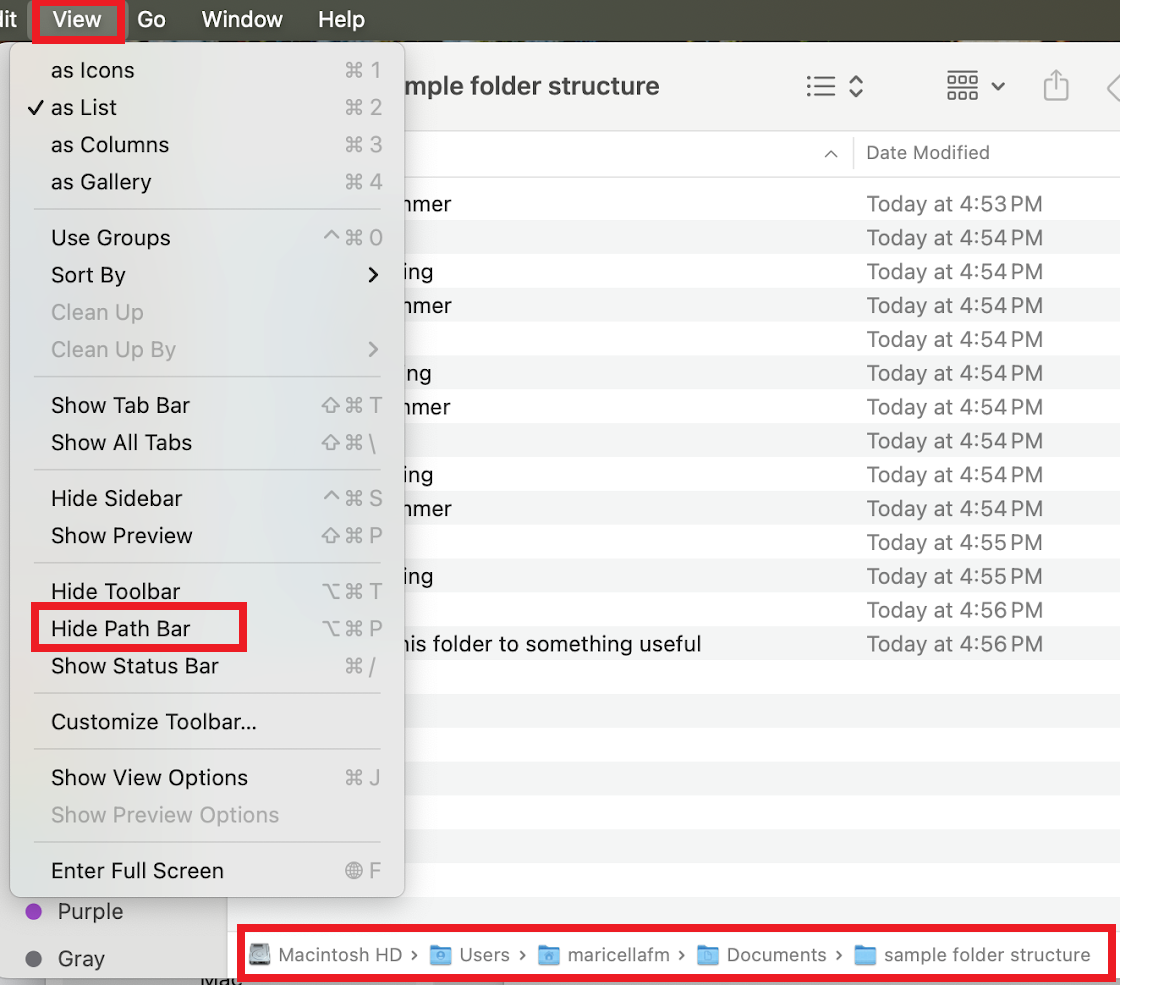
PC
The path bar is always visible in Window’s File Explorer. To access the text version of the path, click into the blank white space next to the path bar.
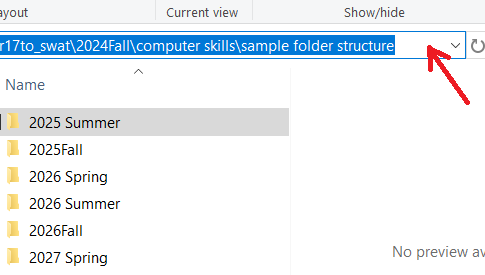
Google Drive’s path, of a sort
Google Drive also has a folder structure, but it is not nearly as useful or accessible as Mac’s Finder or Window’s File Explorer. In particular, it is difficult to copy the path address (as of Summer 2025). That said, the path does appear at the top of your Google Drive screen. You may need to click three little dots to the left of the path to access the full path information.
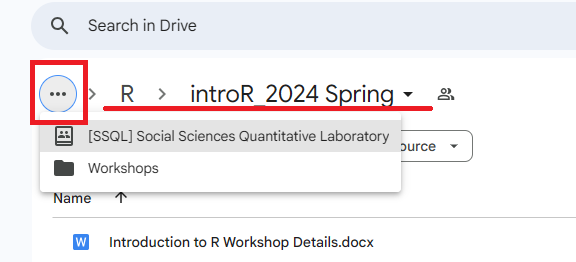
Saving Files in Microsoft Office
Microsoft Office has begun to hide the file structure when you save a document. When you save a document (Save or Save As), the first screen tries to guess where you want to save it. If you have a clear file structure, its guess should only be accurate if you were working in the same location repetitively. You can change this setting if desired; google “customize the save experience in office”. You can also access your file structure by clicking the Browse button (PC) or a downward facing button (Mac).
Your screen may look slightly different than what is shown here. If it is too different to interpret, google “Browse file structure from save word”.
PC
On a PC, click “Browse” from the “Save” or “Save As” screen. In the resulting File Explorer window, browse to the appropriate folder and click “Save”.
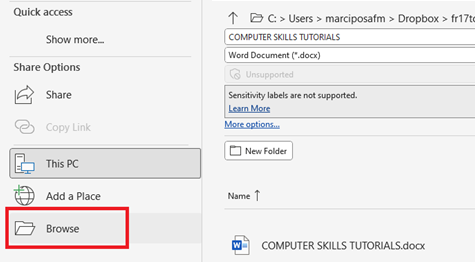
Mac
On a Mac, click the downward facing arrow next to “Where” from the “Save” or “Save As” screen. In the resulting Finder window, browse to the appropriate folder and click “Save”.
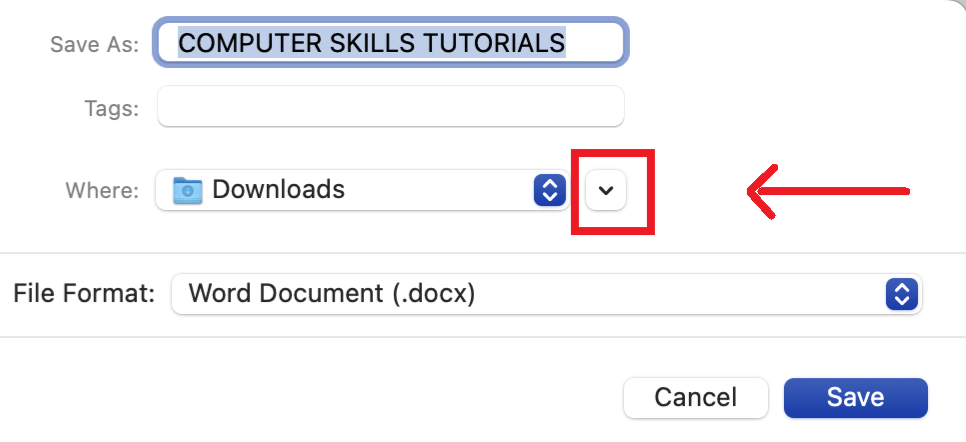
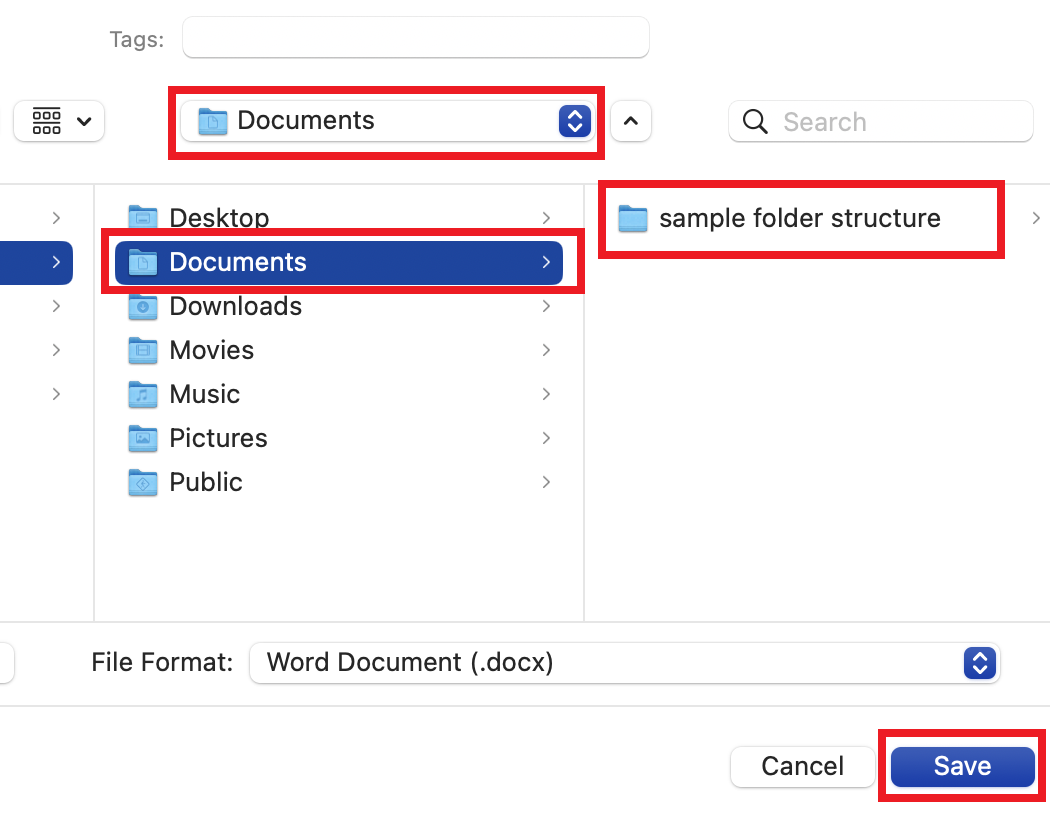
File structure
The following is an example of a sample folder system designed for students and faculty. You can download this example at this link: sample folder structure.
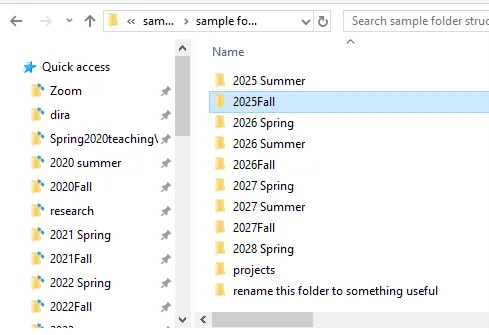
This system follows a few principles.
- The folder names leverage the alpha-numeric ordering required by the Finder (Mac)/File Explorer (PC) programs. “2026 Summer” comes before “2026Fall”, because a space “ ” comes before “F” in the alpha-numeric order.
- Human brains track time-based categories well. Therefore, most of the system is categorized according to semester.
- There are many types of documents that defy time-based organization, such as recipes and multi-year projects. The user is responsible for developing their own system for these types of documents.
This system is just a suggestion; some students and faculty may find other organizational systems more effective.
Quick access/Favorites
Drag and drop regularly used folders into your “Quick Access” (PC) or “Favorites” (Mac) panel on the left side of your Finder (Mac)/File Explorer (PC).
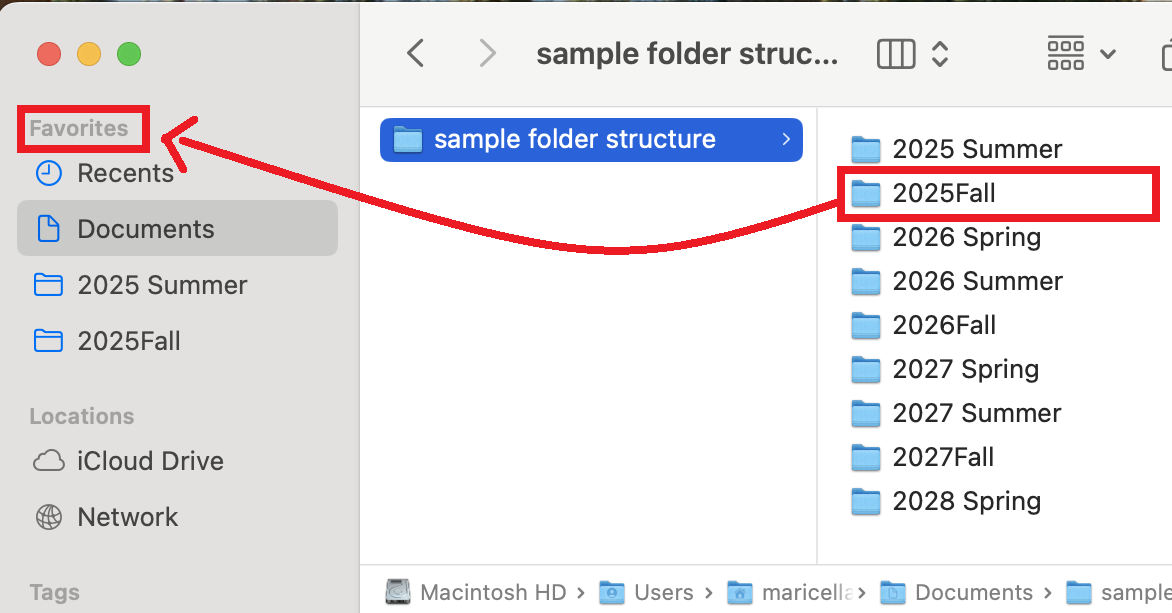
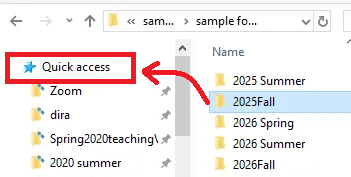
Window management
Typical modern computer users swipe between screens. This is useful for consuming information. For managing information, you want to show information in the window the information originates at the same time as you see the window you want the information to end up in.
A key component of file management is moving folders and files between locations of your computer. This is most efficient when two windows are displayed simultaneously on the computer screen.
For example, with the window configuration below, I can rapidly drag and drop the “Computer Skills” folder into my “all workshops” folder.
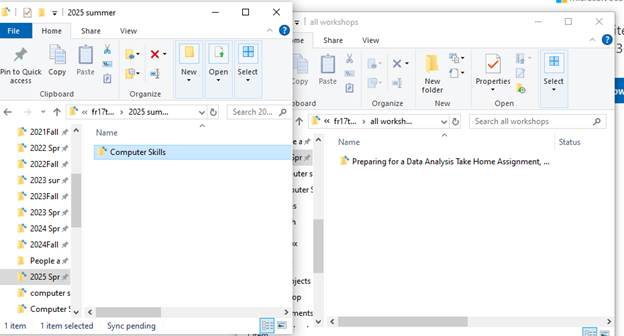
4.2 Practice
Tasks:
- If you are on a Mac, set up your Finder window so that the path bar is visible at the bottom of the window.
- Set up and/or clean up your file structure. This will take a substantial amount of time. I recommend spending 10 minutes setting up the general organization structure and scheduling an hour in the next week to make progress on your organization.
- Copy the path of one folder.
- Open a Finder (Mac)/File Explorer (PC) window.
- Open a new window with Cmd+n (Mac)/Ctrl+n (PC). Open a different folder in one of the windows.
- Create a new folder (in either window) using Cmd+shift+n (Mac)/Ctrl+shift+n (PC).
- Rename that folder.
- Move the folder to your second window by dragging and dropping it.
- Cmd+z (Mac) or Ctrl+z (PC) to undo the move.
The following video shows an example of tasks 4-8.